It's a breeze - game description
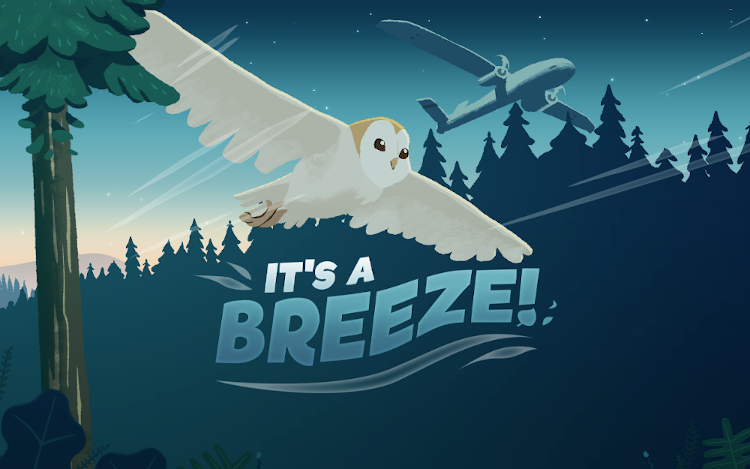
Can we get Lily to land?
Lily the owl wants to land on the tree stump to the right, but a gust of wind keeps blowing her off course.
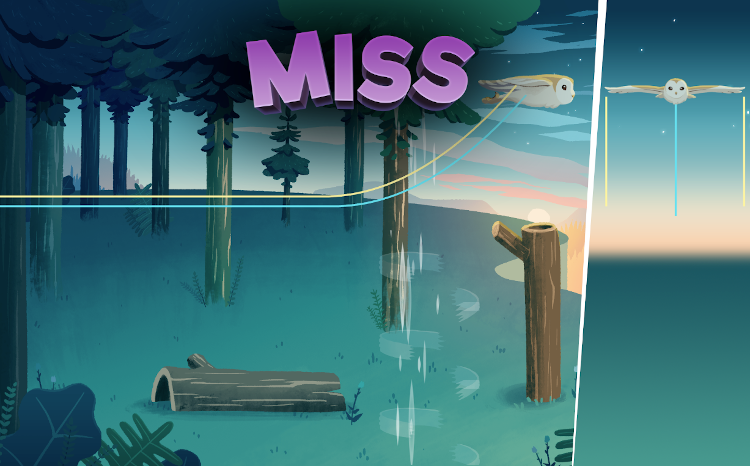
If she flew like a normal plane with fixed wings, the gust would cause Lily to miss the stump as the wind pushes her upwards. Can we adjust her wings to let her land on the stump?
Adjusting Lily's shoulder
Lily's wings can rotate around her shoulder. Let's try changing her shoulder stiffness – can we get her to land on the stump?
Locked shoulder

Loose shoulder
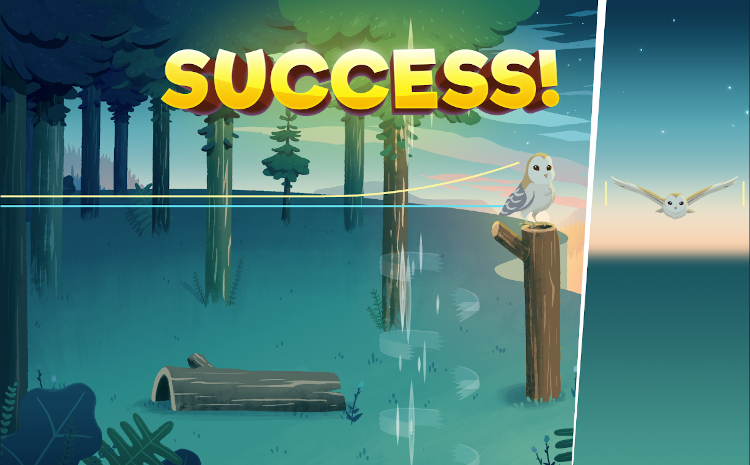
If Lily's shoulders are loose her wings can rotate easily and absorb the gust.
Adjusting Lily's shoulder and the lift position
The position of lift on Lily's wings also affects how she flies in the gust. We can now try adjusting the position of lift and see if we can get Lily to land again.
Loose shoulder & lift position at the tip of Lily's wings
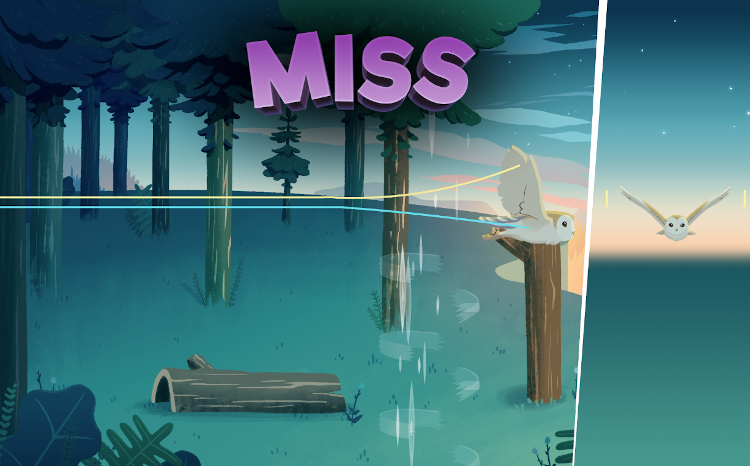
Loose shoulder & lift position in the centre of Lily's wings
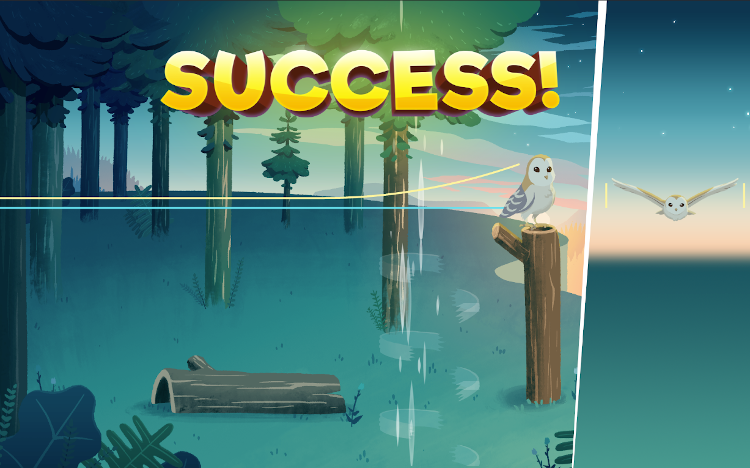
How did Lily do it?
Well, her shoulders must be loose. Then the lift must act at the sweet spot of her wing – about halfway along. It's like hitting a ball at the sweet spot of a bat or racquet.
Now let's apply this to an aeroplane!
Design an aeroplane
Let's apply Lily's tricks to a small, unpiloted plane with hinged wings. The plane must fly through a gust to collect a sample of volcanic gas (we really do this!). The lift is fixed. Can we find the best place for the motors?
Loose shoulder & motors positioned at the wing tips
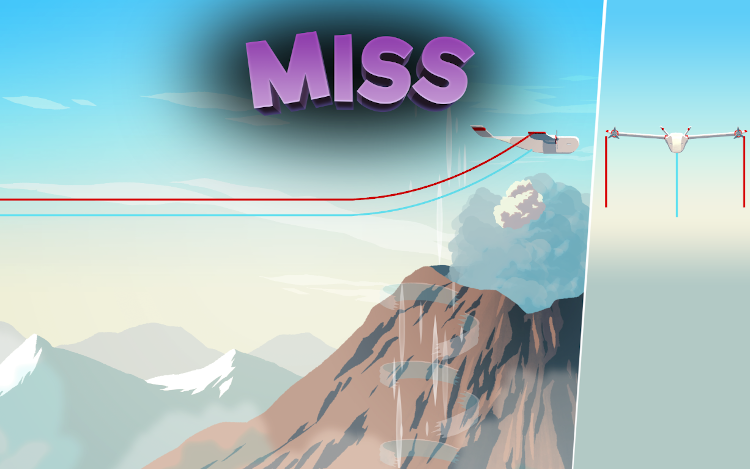
Loose shoulder & motors positioned at the lift position
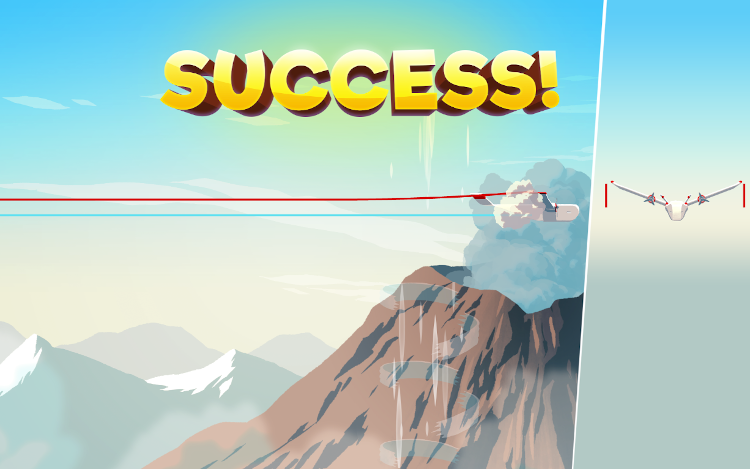
Summary
Let's review the clever physics of gust-absorbing hinged wings on birds and planes.
- The shoulder joints must be loose enough for the wings to rotate and absorb the gust.
- The gust increases the lift. This lift should act at the sweet spot on the wing. The wing can then rotate around the shoulder without jolting the body up or down. Magic!
Return to our main site to discover more about how aeroplanes could be better if they were more like birds.


